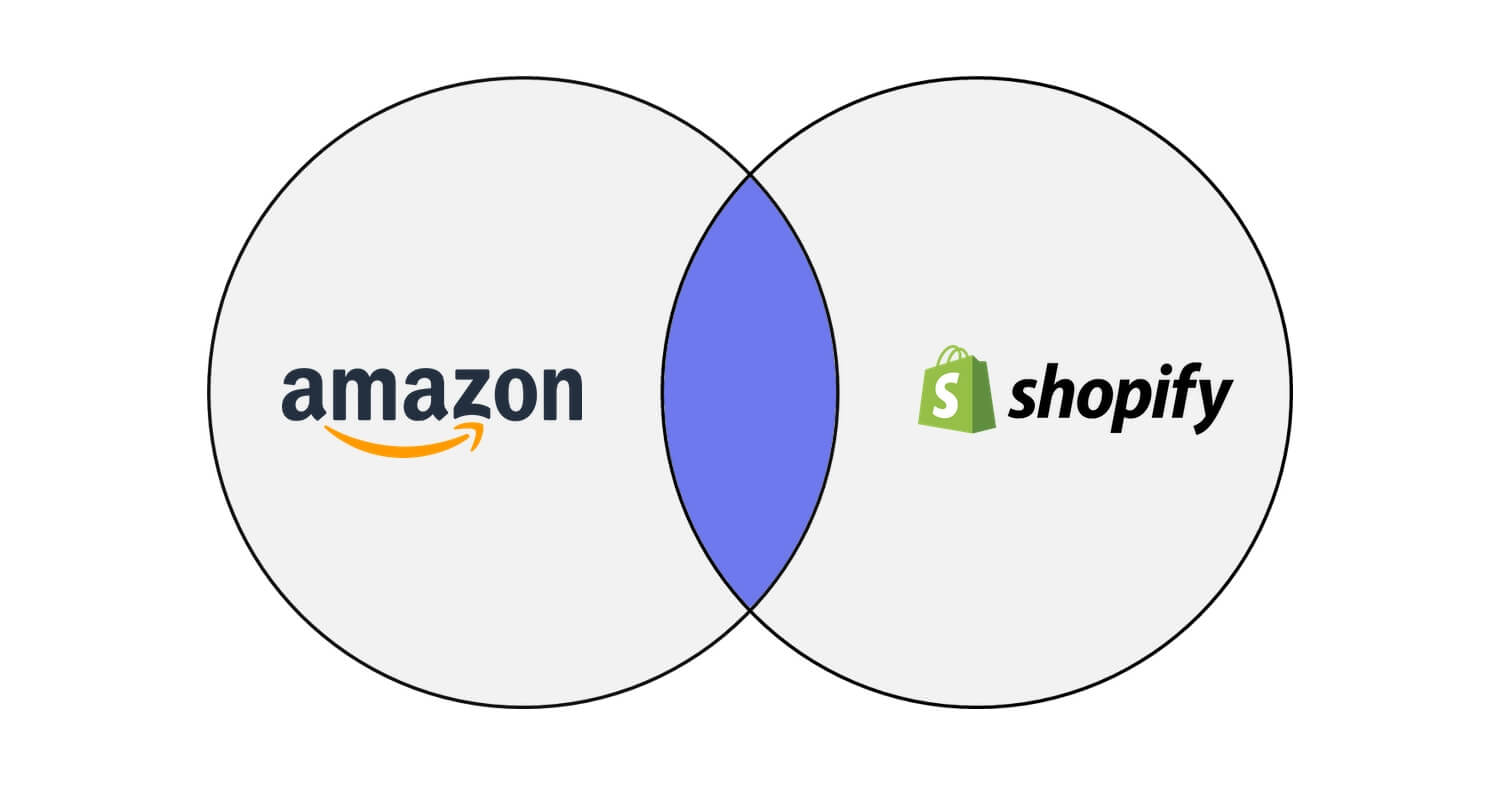The overlap of sellers that sell on both Amazon and Shopify is growing. What used to be separate and distinct groups of entrepreneurs is converging.
Amazon marketplace developed years before Shopify would gain momentum. It inspired a type of business built to sell on Amazon. Many of them sold goods bought wholesale from established brands. Over time, competition among resellers and thus the ever-decreasing margins forced the industry to look for other opportunities. That opportunity was private label brands.
Many of those businesses were built around Amazon and thus tailored their business models around it. For example, most relied on FBA for fulfillment. That made other channels more difficult or expensive to sell on. But since Amazon was (and still is) the largest, they made a calculated risk that building an all-in-on-Amazon business and hence suffering from asset specificity was the right call.
But e-commerce continues to evolve beyond Amazon. Shopify grew to be 40% as large as the Amazon marketplace almost out of nowhere. However, Shopify is just one of many companies. The results of Shopify instead represent the evolution and acceptance of direct-to-consumer commerce. More businesses learned to sell online, and more customers found them there.
While many Amazon-focused sellers continued to wait for the next marketplace to challenge Amazon and thus allow them to diversify, the next marketplace turned out to be direct-to-consumer. Instead of expecting Walmart, Target, Wish, Google, and many other companies that promised to be challengers to deliver, the option arrived in the form of Shopify.
Ten years ago, practically no Amazon sellers had an e-commerce website. Today, many still don’t, but increasingly many do. Realizing that, Amazon is even trying to incentivize sellers to drive external traffic to Amazon rather than to those websites. Amazon still sees e-commerce revolving around Amazon, but even former Amazon-only sellers are changing.

The Amazon seller is now in its third form. The Amazon seller 1.0 was a reseller. Advertising on Amazon and private label brands created the Amazon seller 2.0. The current seller - the Amazon seller 3.0 - is building Amazon-native brands, intentionally selling multi-channel, driving traffic from outside of Amazon, and investing in social commerce. The underlying Amazon marketplace building blocks remain the same, but the seller had to evolve to create more value and differentiate from the competition.
Scratch that. There is no Amazon seller 3.0. They are now just sellers.
Amazon sellers are strategizing beyond figuring out the Amazon search algorithm and building moats from reviews and ratings. Those moats are pretty shallow, and they are hard to transfer outside of Amazon. Ultimately becoming the next Anker is the goal. A brand that used Amazon to kickstart but has since built brand recognition.
Aggregators are further fueling this evolution. Those firms are creating modern brand holding companies for which Amazon is only the first step. Most should drop Amazon from the “Amazon aggregator” title. Their goal is to take the brands beyond Amazon, even if the asset class they are looking for today is only Amazon sellers. But they are not looking to aggregate resellers (the few remaining Amazon sellers 1.0).
The skillsets and tools that powered Amazon sellers used to be quite different from Shopify merchants. Because of that, there were two distinct groups of entrepreneurs. But the line separating them is blurring. Shopify merchants are expanding in marketplaces, Amazon being one of them. Amazon sellers are thinking beyond marketplaces.
For shoppers, this evolution is less visible. Many things for sale on Amazon are not for sale on Shopify, and Shopify doesn’t have a central entry point in the same way Amazon has the search box (Shopify owns a widely popular Shop app, but they don’t appear to be interested in turning it into a standalone shopping app). But when shoppers discover something they like on Instagram, they buy it irregardless of who powers the transaction.
The overlap between those two ecosystems is still small. But it is growing, and that’s the key. For industries that developed in parallel, both are viable and different models. For sellers, retailers, and brands that want to sell online, the choice is thus not one or the other.

